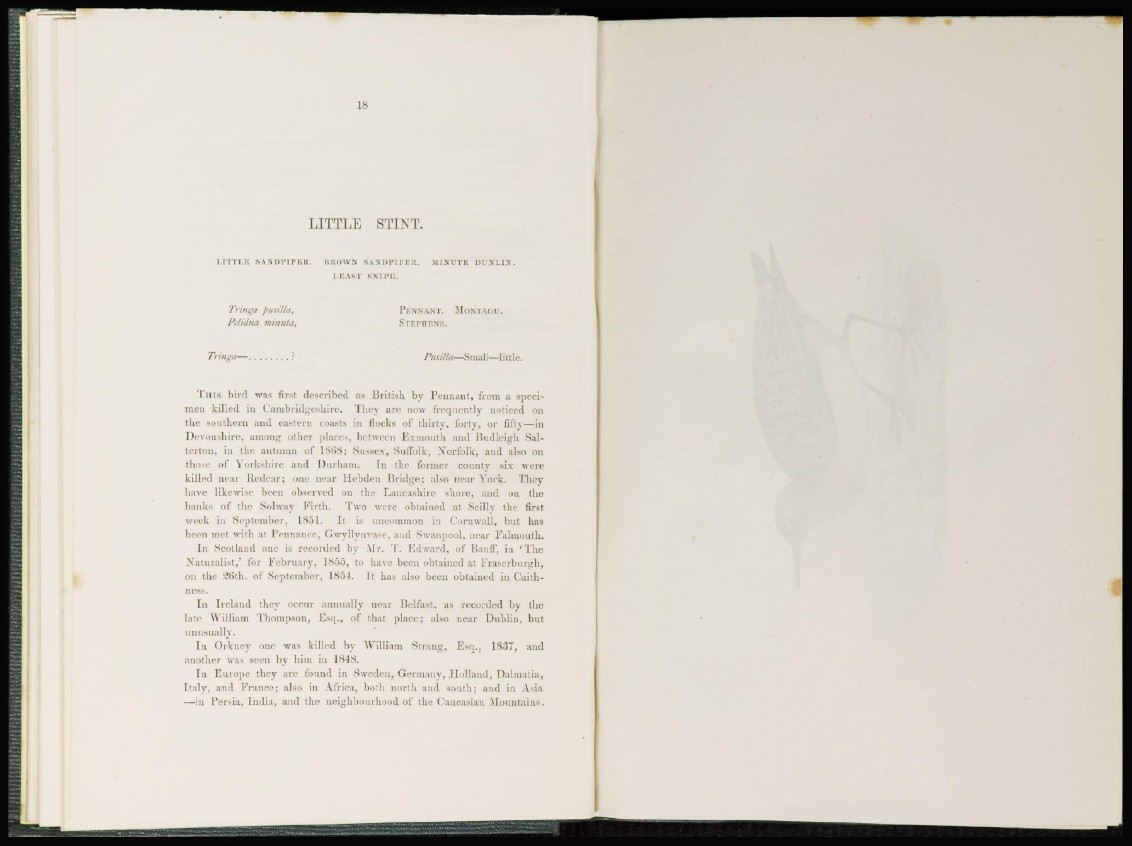
LITTLE STINT.
LITTLE SANDPIPER. BROWN SANDPIPER. MINUTE DUNLIN.
LEAST SNIPE.
Tringa puxilla, PENNANT. MONTAGU.
Pelidna minuia, STEPHENS.
Tringa— ? PusiUa—Small—little.
T H I S bird was first described as British by Pennant, from a specimen
killed in Cambridgeshire. They are now frequently noticed on
the southern and eastern coasts in flocks of thirty, forty, or fifty—in
Devonshire, among other places, between Exmouth and Budleigh Salterton,
in the autumn of 1868; Sussex, Suffolk, Norfolk, and also on
those of Yorkshire and Durham. In the former county six were
killed near Redcar; one near Hebden Bridge; also near York. They
have likewise been observed on the Lancashire shore, and on the
banks of the Solway Firth. Two were obtained at Scilly the first
week in September, 1851, It is uncommon in (1 or n w a l l , but has
been met w i t h at Pennance, Gwyllynvase, and Swanpool, near Falmouth.
In Scotland one is recorded by Mr. T. Edward, of Banff, in ' T h e
N a t u r a l i s t , ' for February, 1855, to have been obtained at Fraserburgh,
on the 36th. of September, 1854. It has also been obtained in Caithness.
In Ireland they occur annually near Belfast, as recorded by t he
late William Thompson, Esq., of that place; also near Dublin, but
unusually.
I n Orkney one was killed by William Strang, Esq., 1837, a nd
another was seen by h im in 1848.
I n Europe they are found in Sweden, Germany, Holland, Dalmatia,
I t a l y , and F r a n c e ; also in Africa, both north and south; and in Asia
—-in Persia, India, and the neighbourhood of the Caucasian Mountains.